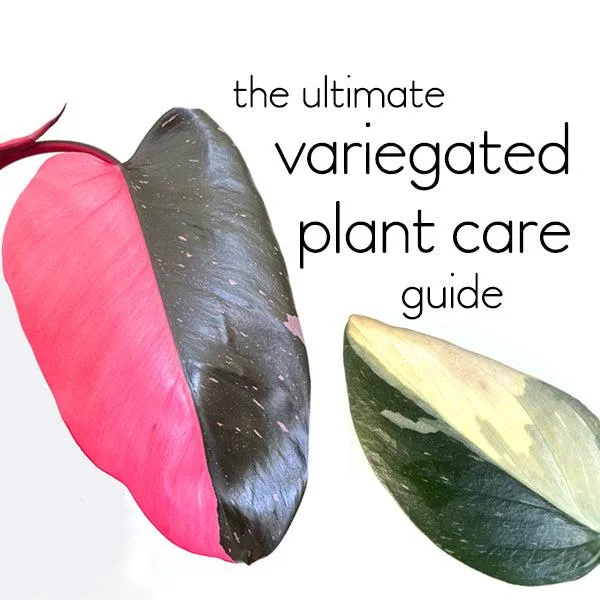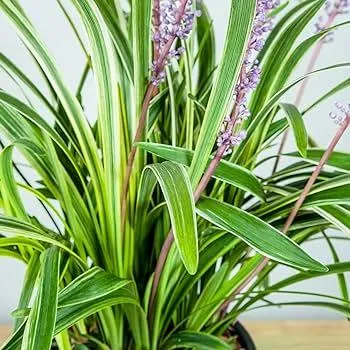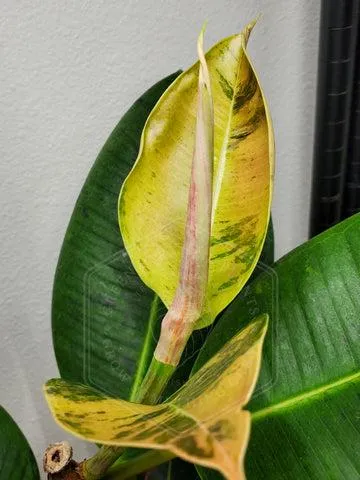The Complete Guide to Variegating Plants at Home
Have you ever seen plants with leaves in multiple colors and wondered how they achieved that variegated look? In this article, I’ll break down everything you need to know to variegate plants in your own home garden. From my experience trying different variegation techniques over the years, it can be super rewarding to create your own uniquely patterned plants.
Understanding Variegation
To start, let’s go over what exactly variegation is. Basically, it’s when a plant produces leaves, stems, or flowers that have patches of different colors other than just solid green. These colors can include white, yellow, pink, or purple. The variegation comes from a genetic trait that causes defects in the plant’s chlorophyll production in certain areas.
There are a few theories as to why some plants evolved this trait in nature. Some scientists think variegation may help attract pollinators. Others suggest it could provide camouflage against predators for certain plant species. In any case, plant breeders have taken variegated plants and selectively bred them over generations to enhance and stabilize the color patterns.
Ways to Achieve Variegation
So how can you create variegated plants yourself? There are a few different approaches to try:
- Propagation from a variegated mother plant. Cuttings or divisions from an existing variegated plant have the best chance of perpetuating the trait. Kind of like passing down genes.
- Tissue culture. By culturing small bits of plantlets in a sterile lab environment, some botanists have induced variegation through genetic mishaps in the tissue’s DNA replication. But this requires specialized equipment.
- Budding or grafting. Joining tissues between a variegated scion and a solid-colored rootstock can sometimes yield a chimera plant with variegated foliage above. Takes horticultural skills though.
The easiest and most accessible method is simply selecting sprouts or reverted branches from a variegated plant that show more prominent variegation patterns. From there, you propagate the cuttings to stabilize those traits in new clones. Let’s dig deeper into propagation techniques.

Propagating Variegated Cuttings
To get started, select a healthy mother variegated plant that you want to propagate from. Make sure to choose branches or sprouts that strongly exhibit the variegated trait you want to capture. Seriously – don’t waste time with reverted growth that’s gone solid green. You want high-contrast color patterns for the cuttings.
Take 4-6 inch stem cuttings in late winter or early spring before buds break dormancy. Remove leaves from the bottom 1/3 of the stem to reduce moisture loss. Dip the cut end in rooting hormone to encourage root formation. Pot the cuttings in a loose seedling mix and keep moist in a warm, bright area with high humidity until roots develop.
Misting the foliage helps too. Check for roots in a few weeks. Once established, pot up the rooted cuttings and grow on until variegation stabilizes in the new clones. Kind of like making photocopies of photocopies – each new generation should maintain the traits. With care and patience, you’ll have successfully propagated your own variegated plants, dawg!
Tending Variegated Plants
Once established, tend to your variegated plants like any others with a few extra care points. Provide adequate sunlight – variegation often intensifies with more light exposure. Rotate pots periodically so all sides color up evenly. Watch for chlorosis (yellowing) in the white/yellow sections from deficiencies.
Fertilize regularly during the growing season using a balanced product. Extra nitrogen may cause the variegation to revert or diminish over time. Monitor for pests too – variegated plants often have less defenses due to having less functional leaves. Remove any non-variegated suckers or reversions that sprout to maintain the trait.

With TLC, your homegrown variegated plants should have stability in expressing their unique patterns for many years. You might face challenges like parts reverting or looking uneven at start. But stick with it – gardening is all about learning through trial and error. Pretty soon, you’ll be the envy of everyone with your awesome array of colorful creations!
Fusing Art with Science
Working to develop new variegated cultivars really brings together the artist within with the scientist. There’s an artistic expression in selecting ideal traits to showcase, and a scientific process to methodically stabilize those traits. Even more rad is combining variegation with other characteristics like foliage shapes or flower colors. The possibilities are endless!
So in summary dawgs, hopefully this guide has given you a crash course into variegating plants. It’s hecka satisfying to see new growth come in looking fly with your customized color schemes. Just remember to start with good stock, practice proper propagation techniques, and give your new variegated bbs the TLC they need. Before you know it, people will be tripping over your dope plant designs left and right. Stay whack y’all – happy variegating!
Do you have any other questions? Feel free to hit me up in the comments. I’m always down to gab more plant linguistics and help fellow green thumbs achieve maximum plant awesomeness. Til next time – keep on growing!
Variegating Your Plants at Home
| Plant | Propagation Method | Success Rate |
|---|---|---|
| Pothos | Cuttings | High |
| Philodendron | Cuttings | Moderate |
| Peperomia | Leaf Cuttings | Moderate |
| Chinese Evergreens | Cuttings | Moderate |
| African Violets | Leaf Cuttings | Moderate |
| Succulents | Leaf Cuttings | High |
FAQ
-
What is variegation?
Variegation is when a plant has more than one color in its leaves. This usually happens naturally but people can sort of artificially induce it too by cutting plant clippings and growing new plants from those. The new plants sometimes keep both colors instead of just one.

-
How do I variegate plants at home?
Basically, there are a few different ways you can variegate plants at home. One way is to take cuttings from branches that have variegated leaves and grow them in water or soil. Seems kinda crazy but it has worked for lots of people! Another method is air layering, where you wrap part of a stem in damp soil or sphagnum moss and let it grow roots there before cutting it off the parent plant.
-
What plants can be variegated?
Many common houseplants can be variegated like pothos, philodendron, spider plants, peperomia and more. Outside, plants like hostas, impatients and coleus also variegate easily. Pretty much any plant that produces offsets or grows from cuttings has a shot at variegating. Perennials and bulbs like daylilies might succeed as well with patience and luck!
-
How long does it take for variegation to show?
The amount of time it takes for variegated patterns to emerge can vary a lot from plant to plant. Sometimes you might see streaks of the new color popping up within weeks or months. But other times it may take half a year or more to really know if the variegation stuck around. Patience is key here – don’t give up too soon! Having said that, after a year with no change, it’s safe to assume it didn’t work.
-
Can variegation be maintained or will it revert?
Unfortunately variegation isn’t always permanent. While you can often keep propagating pieces that stayed variegated, there’s always a chance the new growth might revert back to being all green over time. Conditions seem to play a role too – too much or too little sunlight, nutrients or water could cause a variegated plant to lose its pattern. Once in a while you get a stable varietal but you never know until you try!
-
What causes plants to lose their variegation?
The main reasons a variegated plant might go totally green are lack of light, underwatering, overwatering, deficiencies in nutrients, too much nitrogen or simply genetic instability in that specific variegated cultivar. Sometimes it’s because the variegation was sport variegation- a one time mutation – rather than an inheritable trait. Stress from repotting or damage could also prompt a plant to dump its variegation. Genetics are unpredictable!

-
Is it difficult to maintain variegation in plants?
Variegation isn’t always easy peasy to hold onto unfortunately. You really have to grow the plant in optimal conditions, kind of like a newborn baby that needs TLC! Too much sun might burn the white blades while too little could cause it to revert. Under or overwatering stresses it out too. However, with the right water, light and nutrients, variegated beauties certainly can thrive for years. It takes some effort but the rewards of such rare plants are stunning.
-
Is variegating plants worth all the effort?
That’s a fair question – is trying to variegate plants at home actually worth it when you risk Screwing it up and the plant losing its neat pattern? Well, it truly depends how much you love experimenting and challenging yourself as a grower. When it works, the payoff of a boldly variegated beauty is truly awesome. At the same time, even if the variegation disappears, you still end up with a healthy, usual plant. So you don’t truly lose anything except time. To me, the fun of the journey outweighs any failure. But perhaps it’s just not for everyone! You never know til you give it a shot.
